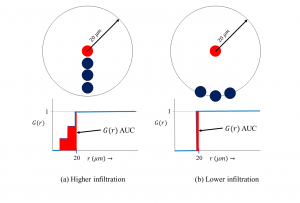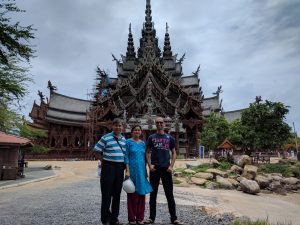Our paper titled “A Functional Spatial Analysis Platform for Discovery of Immunological Interactions Predictive of Low-Grade to High-Grade Transition of Pancreatic Intraductal Papillary Mucinous Neoplasms” has been published in Cancer Informatics’ Special issue on Ensemble Learning and Deep Learning in Cancer Genomic and Imaging Data. In this work, we enhance our G-function based spatial analysis framework by incorporating ideas from functional data analysis, to build a tool more effective at representing the structure in the G-function. We show that spatial metrics derived from our functional spatial platform is able to predict the risk of progression in IPMN’s with a higher accuracy than simpler metrics such as counts or the G-function AUC alone. AN ensemble of models built using counts and the proposed G-function MFPCA metric performs the best. The paper can be found here.




